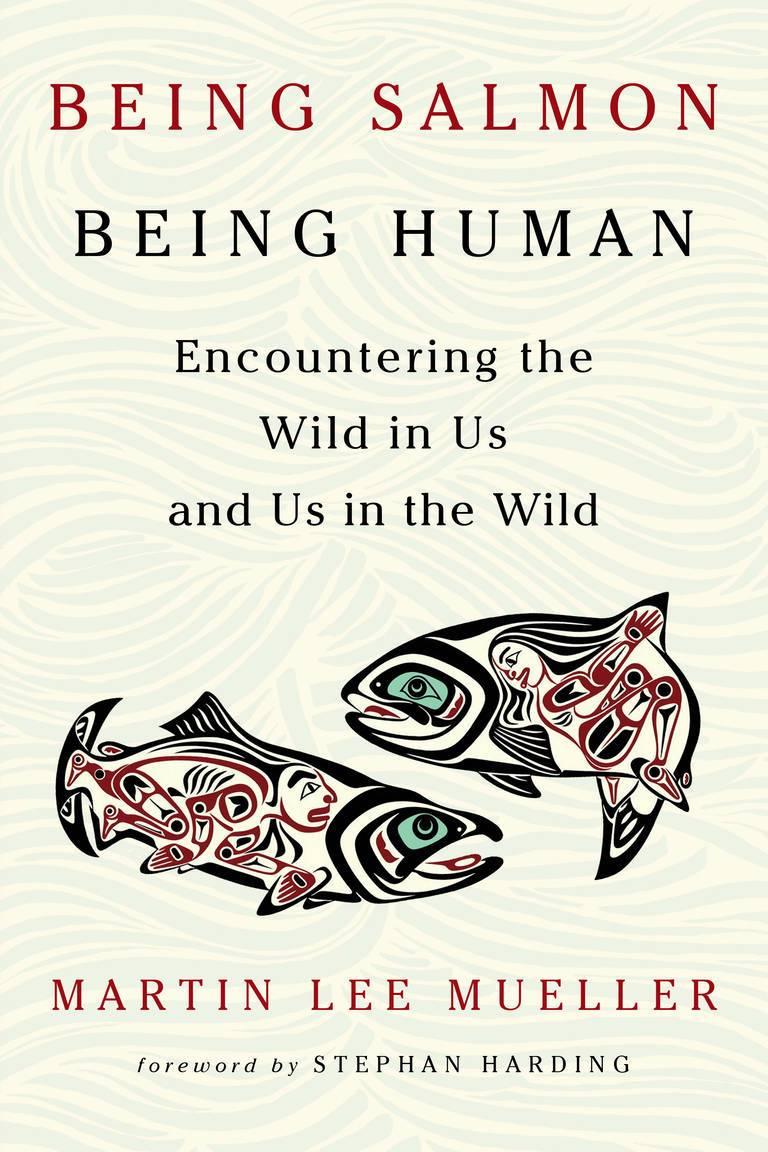
The following excerpt is from the upcoming book Being Salmon, Being Human: Encountering the Wild in Us, and Us in the Wild, available Oct. 18.
By Martin Lee Mueller
When studying salmon and their awe-inspiring, ancient journey, one sooner or later recognizes that many journeys have more than one beginning. So, too, does my relationship to salmon. One beginning was in August 2010, when the Norwegian business newspaper Dagens Næringsliv published a brief opinion piece on the future of salmon in Norway. The piece was signed by Rögnvaldur Hannesson, a professor of fishery economics at the Norwegian School for Economics and Business Administration. In it, Hannesson publicly raised the question of whether or not it is time to sacrifice all of Norway’s wild salmon in favor of their domesticated cousins. The paper described Hannesson as one of the country’s leading experts on fishery economics, and so his contention held a certain authority. “We should perhaps ask ourselves what we want wild salmon for?” writes Hannesson. “If wild salmon get in the way of the fish farming industry, then I must say we must be ready to sacrifice wild salmon. The industry creates great values and jobs along the entire coast. It is an important business branch, one that is important to keep. We need not feel pity for the upper class that will miss a playroom; surely they’ll find some corresponding amusement.”
Here I was, living in the land of Arne Næss, founder of deep ecology; Gro Harlem Brundtland, a pioneer of sustainable development; Fritjof Nansen, Nobel peace laureate and Arctic explorer; Roald Amundsen, first man on the South Pole; or Adolf Tidemand, the painter whose work celebrates Norway’s extraordinary richness in natural beauty and grandeur, its waterfalls, its cascading rivers, its fjords, its high plateaus. Caring for, loving, and taking pleasure in nature’s commons are ideals deeply rooted in the people here; forging kinship ties with these commons might in fact be the quintessence of what it means to make a home in this astonishingly beautiful northern land. And then, from within, this voice that openly and earnestly suggested letting a species go extinct! What are the implications of this suggestion? What worldview is being advocated here? What values resonate within it? What would that mean, to give up on the salmon? And how does this relate to the perfect storm of ecological collapse already well underway?
Meanwhile, another beginning was materializing on a different shore, on the Pacific Rim in the American Northwest. There, in a small community along the Elwha River, a short but mighty stream that gushes from the Olympic Mountains and spills into the Salish Sea, an extraordinary story was playing out: Almost exactly a hundred years after the salmon there had been deemed superfluous and in the way of industry, the human community was beginning to help their salmon leap back from the razor-sharp edge of extinction and recolonize the river. The return of the Elwha salmon became the motivating force behind the largest dam removal ever to be undertaken, anywhere in the world.
Early in the twentieth century, when white settlers first envisioned the two dams in Elwha River, these dams were to yield “peace, power, and civilization,” according to the pioneer and businessman Thomas Aldwell, who was the chief visionary behind the dams. It was Aldwell’s intention to convert the Elwha River “from its waste and loss into a magnificent source of energy and strength.” The building of the two dams was widely recognized to be a significant step toward modernizing the American west. In the hands of ingenious humanity, this “mighty power for good” was constructed without fish ladders that would permit the salmon to climb past the Elwha Dam and past the Glines Canyon Dam, and soon the fish, once renowned as the mightiest salmon in the Olympics, began to decline. Meanwhile, the watershed indigenous community, the Lower Elwha Klallam, also found themselves cast into a desperate struggle for survival. Once known throughout the region as the Strong People, they found that the rapid decline of their totem animal, the salmon, went hand in hand with an unraveling of community ties.
But by the year 2013 both dams had been completely dismantled, and the Elwha was running again, free of obstructions. Slowly, the salmon began moving upriver again. And as they did, the human community throughout the watershed engaged in a re-evaluation of the cultural narratives that have structured thought and guided action.
In some ways, the events in the Elwha watershed were the antithesis to Hannesson’s suggestion. The chronological symmetry between the two cases, combined with their stark contrast, intrigued me. I began reading about the Elwha, and eventually I decided to visit the Olympic Peninsula in the summers of 2012 and 2013, to learn more about the Elwha salmon and about the people who make up the watershed community, both indigenous and others.
Photo credit: Flickr / Richard Probst
Book cover image credit: Chelsea Green Publishing
TriplePundit has published articles from over 1000 contributors. If you'd like to be a guest author, please get in touch!














